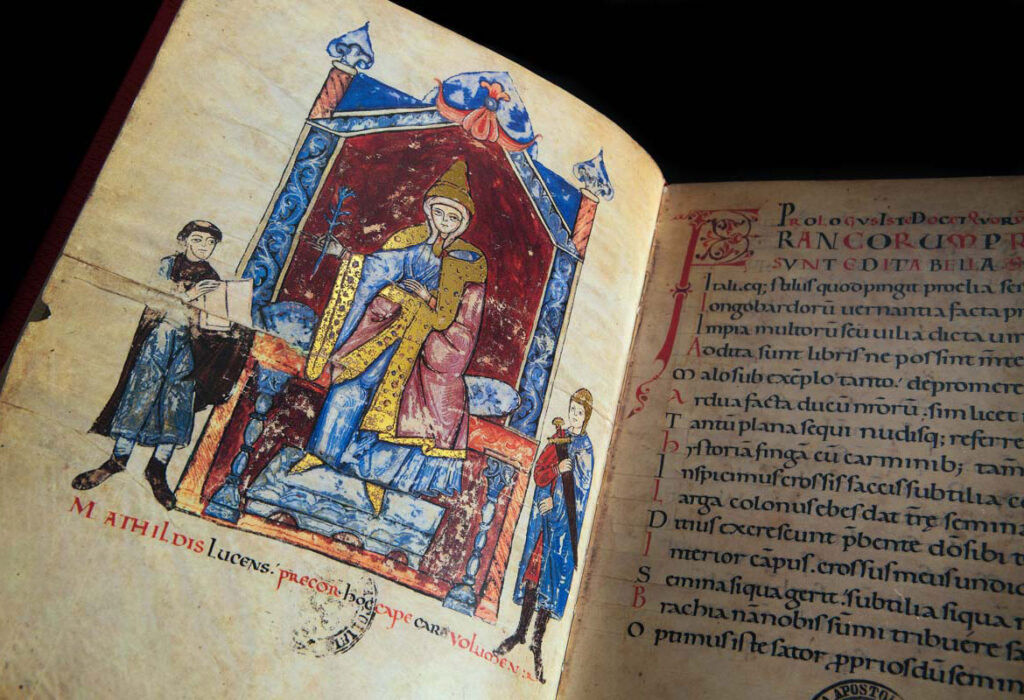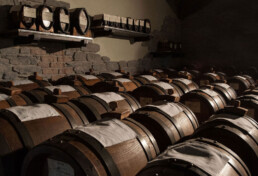A piece of Modena balsamic vinegar history: the monk Donizone
The history of balsamic vinegar of Modena has its origins in the distant past. It hides incredible episodes and curiosities that can make this typical product of our territory even more special. One piece of this history bears the "signature" of the monk Donizone. Do you know what it is and what happened a long time ago? We'll tell you today.
A monk and his poem never delivered to the protagonist
.
Between the 11th and 12th centuries, there lived a Benedictine monk called Donizone. He lived in the monastery of Canossa, of which he later became abbot. The monk wrote 'Vita Mathildis', a poem in two books, whose actual title was 'De principibus Canusinis'. But why did this monk become part of the history of Modena balsamic vinegar?
In these pages the monk recounted a part of the life of Countess Matilda of Canossa, more precisely what happened in her last years. At the end he had to add a chapter about her death. The latter occurred in July 1115, before she could read the work written especially for her. An additional, final chapter was devoted to the arrival of the emperor Henry V at Canossa in the spring of the year after her death.
From heroic deeds to the history of balsamic vinegar of Modena
.
The monk's intention was to write a poem praising the Canossa dynasty and Countess Matilda, making the entire lineage even more heroic in the eyes of readers. For this reason, the man took great pains to emphasise every important event.
The monk was the only witness to many real events and it is these that give life to his poem. Among his tales there is also the part that intersects with the history of balsamic vinegar of Modena. In fact, the text recounts that in Matilda's time balsamic vinegar was produced. Donizone spoke of this nectar that, in 1046, was produced in the fortress of Canossa.
When the king and future emperor Henry II passed through the territory of Piacenza, they sent a messenger to Matilda's father, Marquis Boniface. They asked him for some of the much appreciated and praised vinegar. The marquis sent the emperor a gift of the balsamic vinegar produced in his fortress, stored in a precious silver cask. This fact is now part of the history of balsamic vinegar of Modena and of our tradition, and makes us understand how much this food was already appreciated at that time.
An interesting curiosity
.
The monk Donizone never used the word 'balsamic' in his texts. This, however, should not give rise to any doubts. The vinegar he speaks of is the one we know today and the one that was produced in the fortress of Canossa, but the attribute balsamic came more recently. To be precise, it was used for the first time in 1747 in the Registro delle vendemmie e vendite dei vini and in the ducal inventories of the Reggia Estense in Modena.
The history of balsamic vinegar of Modena began a long time ago
.
In short, balsamic vinegar has its origins in the distant past. The hypothesis is that it was born by chance, thanks to a person who forgot cooked grape must (saba, still used today as a sweetener) in a jar. After a while, he noticed it and tasted it.
The vinegar-making process had already begun, and from that tasting, the production process that we know today was gradually born, a process that was also experienced by the family of Countess Matilda. If it hadn't been for the monk Donizone, who knows whether we would still have known this small part of the history of balsamic vinegar of Modena at the fortress of Canossa!
Balsamic vinegar: a bit of history
The history of balsamic vinegar is profoundly linked to the Modena area and has its origins in a centuries-old tradition. In 2000, this tradition led to the traditional product being awarded the Protected Designation of Origin (PDO). In 2009, the European Commission included the condiment made by adding wine vinegar to cooked must in the register of protected geographical indications (PGI). Let's take a look at the main stages of this condiment, from the past to today.
Traces in Ancient Rome
We all know that balsamic vinegar is of Italian origin, but few of us are aware that the history of this condiment has very ancient origins. In fact, we find some traces of its production and use as early as the Middle Eastern civilisations of the 3rd millennium BC and, above all, during the period of the ancient Romans. It was among the Romans that the cooking of grape must, typical of the production process of balsamic vinegar, was born.
Initially, however, must was not used as a condiment. We find evidence of this use in the first book of Virgil's Georgics. More specifically, it tells of a woman from the Emilian area who cooked the must and stored it in barrels for later consumption.
At the court of the Estensi
Over the centuries, the ancestor of balsamic has undergone numerous changes. However, the first concrete evidence of a condiment from the Modena area, similar to balsamic vinegar, dates back to the Este family's move from Ferrara to Modena. In the registers of the Este's secret cellars, relating to the year 1747, there is mention of this interesting food and wine product.
The Napoleonic invasion and the balsamic vinegar commerce
Until 1796, the year of Napoleon's invasion, balsamic vinegar was a condiment found only on the tables of the Este dukes. After Napoleon's arrival in Italy, this product began to be known and sold outside the Duchy of Modena. Producers began to present it at numerous international exhibitions and it was a great success.
The first dynasties of producers of balsamic black gold, which are still part of the Consortium for the Protection of Balsamic Vinegar, date back to the 19th century.
Balsamic vinegar today
In 1933, Balsamic vinegar was officially recognised by the Minister of Agriculture Giacomo Acerbo. It was in 1965, however, that the first specification on the "Characteristics of composition and method of preparation of Balsamic Vinegar of Modena" was published in the Official Gazette. Over time, this condiment has become increasingly popular. It has gained greater appreciation year after year.
Balsamic Vinegar of Modena from Acetaia Marchi
As we said at the beginning, the diffusion and appreciation of balsamic vinegar over time has led to some very important recognitions. We at Acetaia Marchi are proud of this and for this reason we produce our vinegar by valuing tradition and using top quality grapes. We do not use preservatives or other substances that can alter the authenticity of the condiment. We only offer products that guarantee a unique and unforgettable culinary experience.
Bring the taste of tradition to the table with the Traditional Balsamic Vinegar PDO and the Balsamic Vinegar of Modena PGI produced by Acetaia Marchi. You certainly won't regret it!






